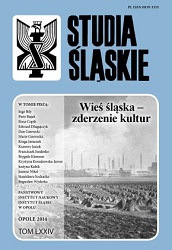Wieś i miasto na Śląsku Austriackim 1848-1918: różnice i kontrowersje wokół oreintacji narodowej i politycznej
Village and city in Austrian Silesia between 1848 and 1918: differences and controversy on national and political orientation
Author(s): Marie Gawrecka, Dan GawreckiSubject(s): History
Published by: Instytut Śląski
Keywords: Austrian Silesia; Opava Silesia; Cieszyn Silesia; Population; national movements; village; city;
Summary/Abstract: Because of modernization, some crucial changes took place in both parts of Austrian Silesia. They concerned also demographical issues, i.e. depopulation of eastern villages of Opava Silesia and popu- lation growth in industrial villages of Ostrava–Karviná industrial area in Cieszyn Silesia. The number of their inhabitants often exceeded the population in traditional cities that still have been the centres of German people and Germanization. Although German population exceeded, Cieszyn and Opava have been the centers of Polish and Czech national movement. The percentage of Polish and Czech people have increased in the population structure. The economical and national-political role of coun- try (e.g. Karviná, Orłowa, Polish Ostrava, and Trzyniec), as well as, the cities of the Coal Basin (Fryszat or Moravian Ostrava) have increased. Political orientation of villages and cities of ten differed each other. The issue can be proved by analyzing Austrian parliament election results. Some clashes also happened because of high earning migration not only to Galicia, but also from Moravia or Czech. Some agrarian organizations, especially in German and Czech agricultural areas, were found as rep- resentation of political identity of peasants
Journal: Studia Śląskie
- Issue Year: 2014
- Issue No: 74
- Page Range: 45-56
- Page Count: 12
- Language: Polish

